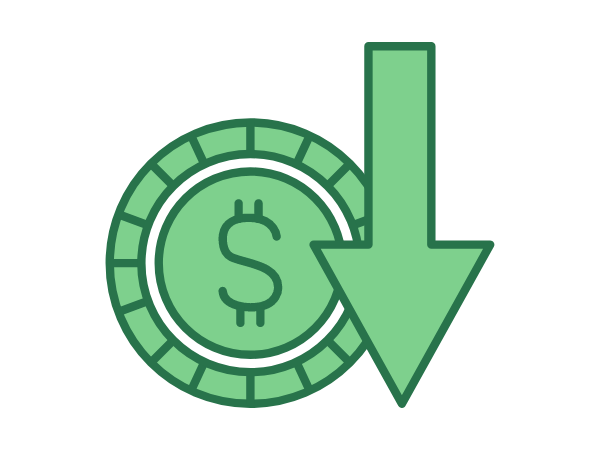What is performance marketing?
One strategy allows you to reach more audiences for less spending: performance marketing. It lets you collaborate with small content creators, so they can reach demographics that your campaign might have missed. Believe it or not, regular people have millions of followers as online influencers, and they could lead those people to your brand.
I’ve described affiliate marketing, one of the performance marketing strategies. This marketing campaign lets you pay only when they give you results. Other parts enable you to spend less money on other services. Read further to learn more about this digital marketing method!
I’ll talk about what performance marketing is all about, especially the available channels. Then, I’ll go through the various situations when you need this marketing strategy. After that, I’ll explain the potential risks you could encounter with performance marketing. Here’s a rundown of the topics I’ll discuss:
- Definition and parts of performance marketing
- How to measure performance
- The potential benefits
- The potential risks
What does performance marketing mean?

As the name suggests, it’s a way of promoting products and services based on performance. It involves paying for a third party once they produce the results you want.
If you know about affiliate marketing, this may ring a bell. This method needs online influencers to promote a brand using their preferred online channels, most often social media.
This type of marketing is a part because it involves so many other methods, including affiliate marketing. Here are the types of performance marketing channels:
- Affiliate partners are another word for the online influencers part of affiliate marketing programs. They usually get a promo code or URL from a company. Then the partner must convince others to pay for a product or service using that code or web address. If you want a great example, check out LeadAdvisors’ program.
- Retailers are the companies that could host your content on their websites. This allows you to spread your online presence while only paying when people click your link or buy from your brand.
- Affiliate networks or third-party tracking platforms provide various tools such as text links, banners, and product feeds. Also, they allow you to keep track of certain metrics like conversions, leads, and clicks.
- Outsourced Program Management Companies (OPMs) are also known as affiliate managers, and they can handle all the marketing for you. They have the right people and tools to plan and execute your performance marketing campaign. As a result, they could save you the hassle of building a new team just for this.
- Social media advertising involves placing ads on sites like Facebook and YouTube. For example, the latter’s TrueView ads let you pay only when your video ad plays for at least 30 seconds.
- Search engine marketing has two parts: ads and SEO. You could show people your ads when they search for words related to your brand. SEO involves placing keywords in your content to help it show up first on search results.
- Native advertising is also called sponsored content, and it’s the kind of ad that blends with the regular content of other websites.
How do you measure this type of marketing?
We now know that performance marketing means you only pay when you get the results you want. Next, here are the ways you can pay for them:
- Pay Per Lead means you pay for lead generation. A “lead” is a specific action that shows that a customer is on a certain part of your sales funnel. However, performance marketing uses it to gain information from customers. You can use this for other methods like email marketing.
- Cost Per Acquisition (CPA) or Pay Per Sale means you pay each time your customer completes their purchase. Online businesses often pick this model.
- Cost Per Mile means you pay only whenever your ad appears to viewers 1,000 times.
- Pay Per Click means you pay for clicks that direct people to your landing page.
- Cost Per Action involves paying whenever your target audience does other things you want them to do, such as signing up for your newsletter or downloading your ebook.
Read More: How Does Post-COVID Marketing Work?
What can performance marketing do for my brand?
You need this kind of marketing if you need measurable results for conversions. Other options can help you boost brand awareness and drive traffic to your website.
Take the classic billboards, for example. Back then, it was the best way to show your brand to many people. The problem is, it’s hard to know for sure if they’re working.
That’s why they’re often in crowded areas, such as New York Times Square. Yet, it’s hard to know if the ad works because you have other marketing methods.
Do you want to know if your banner ad makes people buy your products? It can do that! On the other hand, platforms for performance marketing track metrics in real-time.
What’s more, you get to decide just how much you spend every week or month. Social media and search sites enable users to set a budget so that the page won’t spend more than that.
Also, you can set up your ads, so they only show to a certain group of people. This allows you to get the most out of every dollar you spend for this method.
Even better, another company can do this all for you. If you have a marketing team right now, the members are probably busy on another project.
It’s not a good idea to split their time for a new one, but it costs a lot to get new people. Even if you do, you might have to train them too. You can skip all this with the help of another company!
What are its risks?
You must plan and launch your campaign right. Otherwise, you might put in a lot of money but never get the results you want. This is why your goals and metrics should match each other.
Let’s say you want to get more sales, but you place a pay-per-click model for a banner ad. Then, let’s take a step further and say that many people click on your ad.
What if they don’t buy your products when they get to your page? This means you paid each time someone clicked your ad, but you don’t get the added sales you wanted.
Also, you might measure for metrics that don’t help your brand at all. This is more common when you have affiliate marketers. If they get more followers, that doesn’t always mean you get more customers.
Worse, some marketing companies may use black-hat tactics to give you results. These are methods that may bring short-term results but cause long-term problems.
Let’s say a company stuffs your content with keywords, but it reads like nonsense to readers. The page might have a list of trending search phrases, but that’s it.
You might get more people clicking on it at first. They will eventually notice that your page contains nothing important, so they quickly close your page.
This increases your bounce rate, which shows search engines that your content probably isn’t useful. After all, why are many people leaving it after a few seconds?
As a result, Google will probably leave your page in search results after a week. Just like that, your results are cut short, but you still have to pay full price!
Related Articles
Final thoughts
Performance marketing is a good choice for maximizing results and reducing costs. However, you must be careful when choosing your channels.
You could skip the hassle of handling the campaign yourself by letting a digital marketing agency do it for you. However, you need to be careful when choosing.
It would be best to get a company that has provided results for hundreds of companies. This track record would prove that it can provide the results you need.
Fortunately, LeadAdvisors fits these requirements, so you can rest assured your marketing is in good hands. Learn more about its services by clicking here.




